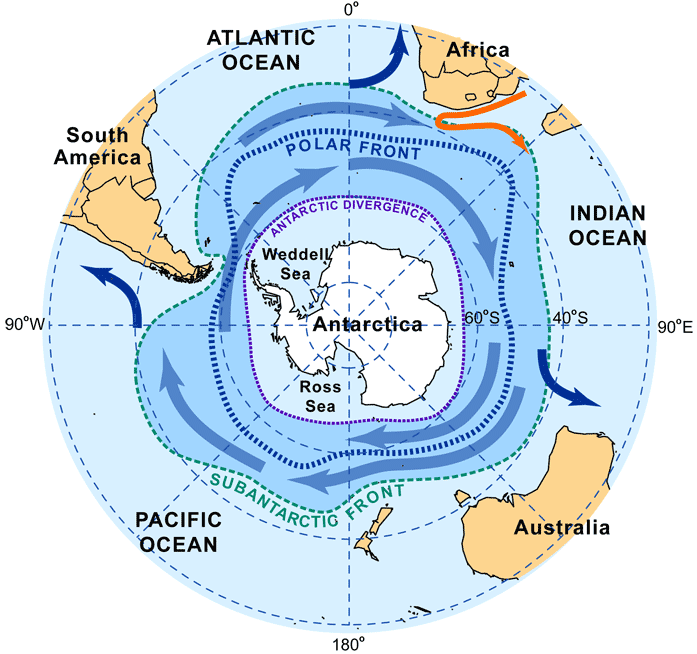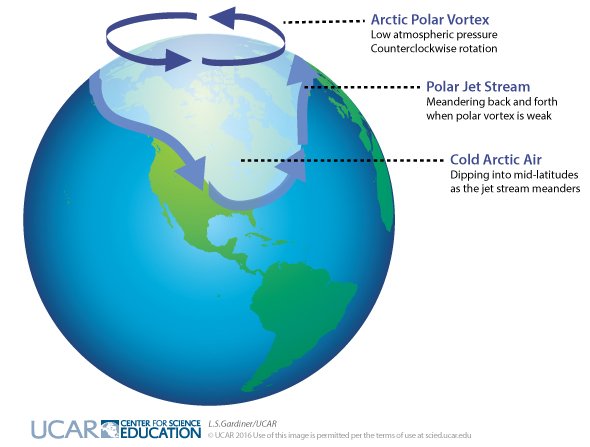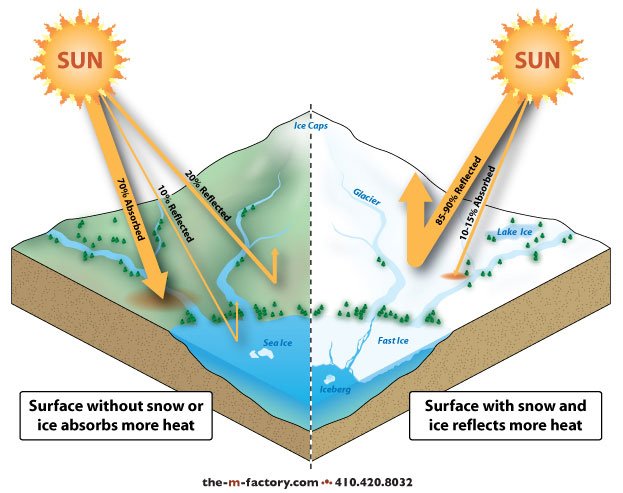Introduction
Since the industrial revolution in the 18th century, greenhouse gasses have been rising causing our atmosphere to become warmer. The consequences of this global warming can be clearly seen on the Poles. The Arctic experienced a temperature increase of about 0.6° Celsius since the beginning of the 20th century, while in Antarctica an increase of 0.2° Celsius can be seen. As temperature is rising, the ice sheets in both the Arctic and Antarctica are melting although it's known that the ice on the South Pole retreats slower than the ice on the North Pole. The reason behind this difference in melting rates can be explained by a few key factors.

Ocean currents and location
The Earths oceans play a significant role in its climate as the ocean currents transport heat around the world, mainly from the tropical regions to the Poles. The South Pole is located on the landmass of Antarctica, surrounded by the Atlantic, Indian and Pacific Oceans. Antarctica has the Antarctic Circumpolar Current, which navigates around the continent. This current prevents warm water from reaching the South Pole which keeps the temperature down. The North Pole on the other hand is located on sea ice surrounded by Northern Europe, Russia and North America. All this land in its surrounding prevent the existing of such a circumpolar current in the Arctic Sea. This means that warm water coming from the equator can reach the Arctic Sea, with the exception of Greenland, which is surrounded by cold water streams. Furthermore, temperature fluctuations are greater due to the low heat capacity of land compared to water. These greater fluctuations make the ice on the North Pole more susceptible for temperature changes.

Image source Antarctic Circumpolar Current
Atmospheric circulations
Besides water, air flows have a significant impact on the polar climates as well. Both the North and South pole have a standard high pressure area near the surface although both areas experience a provisional low pressure area at the 500hPa level during winter. This creates strong circumpolar winds, the polar vertex. The Arctic polar vortex is warmer and less stable than its counterpart on the South Pole, mainly because of differences in activity of atmospheric 'Rossby' waves. As the atmospheric waves on the North Pole are a lot more active because of the Arctic geography, they possess more energy and let the Arctic Vortex collapse more rapidly.

Image source The arctic polar vortex
The albedo feedback
The energy used by water and air comes from the sun. This light is partially absorbed by the surface and partially reflected back to the cosmos. However, both the Arctic and Antarctica are covered in snow and ice which has a high albedo of respectivly 0.70and 0.85. A higher albedo means that a larger amount of light is reflected back in to the sky which is one of the reasons why the Poles remain so cold. Furthermore, the albedo has a positive feedback on the temperature. The reflection is the highest for fresh snow and ice but decreases when the ice melts or gets older. This feedback means that the faster melting of the Arctic ice leads to a lower albedo, which leads to even more melting.

Image source Albedo effect
Differences in precipitation
The average precipitation on the Arctic is around 250mm/yr while Antarctica is the driest continent on Earth with an average of only 110mm/yr. This means they are both classified as a polar desert. The largest effect however comes from the type of precipitation. On the South Pole the temperature is rarely above freezing with the exception of some coastal areas and nearby islands. This means precipitation is almost always in the form of snow. The Arctic is warmer with summer temperatures going up to 5° Celsius in July. This has as consequence that precipitation might fall as rain instead of snow during the warmer periods. It turns out that ice melts significantly faster when rain hits it, contributing to a faster ice decline on the North Pole.
Altitude
The temperature of the atmosphere depends on the altitude. In the troposphere temperature declines at a rate of about 1°C per 100m when the air is dry and 0.65°C per 100m when the air is humid. This means that topography can have an effect on temperature. Antarctica is the highest continent on the planet with an average height of 2200m because of it ice sheets. This high altitude contributes to a cold temperature on the South Pole. At the North Pole it's more complex. If you look at the island of Greenland, you got an average altitude of 1600m to 1700m which is not a significant difference with Antarctican, But the North Pole is located on sea ice which doesn't grow thicker than several meters above sea level. This is a significant difference with the Antarctic, which can partly explain the difference in temperature.
Conclusion
It seems clear that Antarctica at the South Pole will survive longer than the Arctic if the current melting rates stay unchanged. The Arctic has warm oceanic water arriving because of a lack of circumpolar currents, a higher land ratio, a warmer and more unstable polar vortex, a lower albedo, more precipitation and a lower altitude. All this elements contributes to a higher temperature, and hence more rapid melting on the North Pole and in the Arctic environments. Antarctica has the opposite, which provides more protection against global warming.
I hope you found this article to be interesting, If you have any questions, don't hesitate to ask them.
Shout out to @geopolis, the community for promoting and connecting authors in global sciences.
Sources
http://onlinelibrary.wiley.com/doi/10.1002/joc.1810/full
https://britastro.org/journal_old/pdf/114-6shanklin.pdf
http://www.ipcc.ch/report/ar5/wg3/
https://earthobservatory.nasa.gov/Features/WorldOfChange/sea_ice.php
https://www.pik-potsdam.de/members/cramer/publications/before-2005/prentice_1992_jbiogeog.pdf
http://www.atmos.colostate.edu/~davet/ao/ThompsonPapers/ThompsonWallace1998.pdf
http://www.dw.com/en/why-is-the-arctic-melting-faster-than-the-antarctic/a-38678700
https://www.theguardian.com/environment/2015/may/05/arctic-ice-retreat-scientists-climate-change
Nice Article! There are even a lot of sources (such as NASA, your average pseudo scientist ;) ) claiming that Antarctica sea ice is expanding:
"Since the late 1970s, the Arctic has lost an average of 20,800 square miles (53,900 square kilometers) of ice a year; the Antarctic has gained an average of 7,300 square miles (18,900 sq km)"
https://www.nasa.gov/content/goddard/antarctic-sea-ice-reaches-new-record-maximum
Furthermore, speaking about the ice sheets, the major part of the Antarctica one is growing because climate change is enhancing Antarctic Precipitation. (there is very nice scientific article by Zwally et al. (2005) discussing this trend based on data from 1992 - 2002. Also the IPCC report from 2007 is supporting this claim. Nevertheless, there is a lot of uncertainty about the fate of the Western Antarctic Ice Sheet so in the end, no knows for sure!
@OriginalWorks
The @OriginalWorks bot has determined this post by @samve to be original material and upvoted it!
To call @OriginalWorks, simply reply to any post with @originalworks or !originalworks in your message!
Release the Kraken! You got a 15.38% upvote from @seakraken courtesy of @samve!
The polar vortices have become significantly more talked about lately, especially with the way the midwest is getting hit by the Arctic polar vortex collapses.